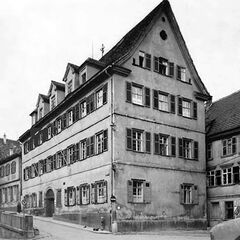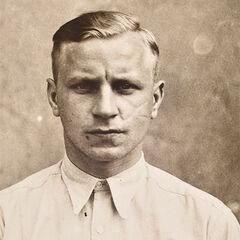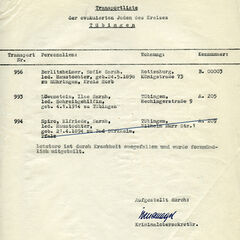Münzgasse 13: Police and Persecution during National Socialism
Station im Stadtrundgang: History Path to National Socialism
From 1936 on, the Tübingen Polizeidirektion (police department) was based in Münzgasse 13. It also housed branches of the Kriminalpolizei (criminal police, KriPo) and the Geheime Staatspolizei (Secret State Police, Gestapo). These institutions were mainly responsible for organizing the persecution of political enemies, opponents from the Christian Churches, Jews, Sinti, forced laborers, homosexuals, and "Asoziale" (a derogative compound term for the "work-shy", the homeless, alcoholics, prostitutes, and others).
Beginning in early 1933, the police and the National Socialist organizations Sturmabteilung ("Storm Detachment" brown-shirt stormtroopers, SA) and Schutzstaffel ("Security Squadron", SS) arrested 27 political enemies in Tübingen, especially Communists and Social Democrats, and carted them off to Heuberg concentration camp in the Swabian Jura. After their release, they had to regularly report to the police department. Starting in early 1934, the recently established branch of the Württemberg Politische Polizei (political police; part of the Gestapo from 1936 on) was responsible for the persecution of political enemies.
From 1941 on, the Gestapo, supported by the Schutzpolizei (uniformed police, SchuPo), planned the deportations of Jews. Various organizations were involved in the deportations. The orders were relayed from the Gestapo in Stuttgart to the Landrat (county administrator) and the police department. The Gestapo confiscated personal possessions and sealed the residences of deportees while the Finanzamt (tax and revenue office) sold the victims' property. On December 1, 1941, the first two Jewish women from Tübingen were deported to the concentration camp/ghetto in Riga, Latvia. In August 1942, the remaining five Jews were carted off from Tübingen to Theresienstadt concentration camp near Prague; none of them survived. One Jewish woman, Klara Wallensteiner, eluded deportation by committing suicide. In total, 22 Jews who came from Tübingen were deported. Only two survived the Shoah.
Image 1
The Tübingen Polizeidirektion (police department) in Münzgasse 13, undated. Photo: City Archives Tübingen
Image 2
Herbert Kappler (1907-1978) was the head of the Tübingen branch of the Geheime Staatspolizei (Secret State Police, Gestapo) from 1934 to 1938. As commander of the Sicherheitspolizei (Security Police, SiPo) and the Sicherheitsdienst (Security Service, SD) of the Schutzstaffel ("Security Squadron", SS) in Rome, he organized the deportation of the local Jewish population and, on March 24, 1944, the shooting of 335 hostages during the Adreatine massacre. Photo: Federal Archives Berlin
Image 3
A deportation list of Tübingen Jews. Ilse Bloch-Löwenstein and Sofie Berlitzheimer were part of the first transport to Riga in early December 1941. For the time being, police chief Bücheler was able to have the sick Elfriede Spiro struck off the list. Image: City Archives Tübingen




